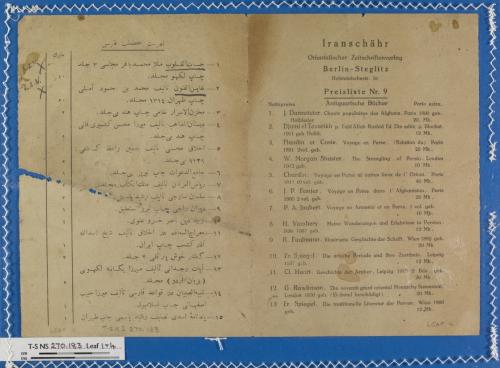Q&A Wednesday: A late date with Nick Posegay

Q&A Wednesday gives a short interview with a Genizah researcher: what are they working on today? And why?
Nick, what are you working on this week?
Lately I’ve been working on late-dated manuscripts in Genizah collections. Looking at fragments dated after 1864, trying to work out how they ended up in genizot, and thinking about what that means for “Cairo Genizah” collections as we typically understand them.
Have you found many fragments that are dated that late?
I’ve found about 25 that are explicitly dated, but I suspect there are a few hundred that could be placed in that time range. There’s quite a bit of printed material in the T-S Collection that is late but without specific dates.
In which parts of the Collection do you tend to see late-dated material?
In Cambridge it’s mostly the New Series, but I’ve also found a few in the Rylands Library, the British Library, and the Mosseri Collection. I would bet that there’s more in the Additional Series, but it is vast and uncatalogued which makes it hard to track things down remotely.
What genres are the ca. 25 late-dated fragments that you’re looking at, and which languages?
It’s a mix of genres. There are Hebrew and Aramaic documents related to marriage and divorce, letters in Ladino and Judaeo-Arabic, and Arabic newspapers. The really interesting thing is that some of the fragments were probably never even in Egypt, let alone in genizot.
What’s your best guess for how this material ended up in the Cambridge Genizah Collections, if it might never have been in Egypt or in a genizah?
It really depends on the fragment. I suspect that some of them were sold directly to European “collectors” who visited Cairo in the 1890s. There are people like Agnes Lewis, Margaret Gibson, and Greville Chester who we know purchased manuscripts from local dealers. Solomon Schechter also admitted to purchasing some of his “hoard” from Cairene manuscript sellers. There are some fragments though that must have been added to “Genizah” collections after they arrived in Europe. That leads to your next question.
What’s the latest dated document that’s been found in the Genizah?
The latest fragment I’ve found is T-S NS 270.183, which is a German price list for Arabic and Persian books. It was printed in 1929, and some librarian at the UL must have added it to the crates of unsorted fragments between the time of Schechter’s departure (1902) and Goitein’s arrival in the 1950s.
Last question: what are you planning to do with these late-dated documents - are there plans to publish them?
I don’t have any plans to publish the texts themselves, although one ketubba from 1899 has already been published (Ashur & Outhwaite 2018, “A Jewish Marriage Deed from Nineteenth-Century Yemen”). My main interest is what these documents may mean for the story of the Genizah’s movement between Cairo and Cambridge, so that’s the next step in the investigation.
Thanks Nick!

Add new comment